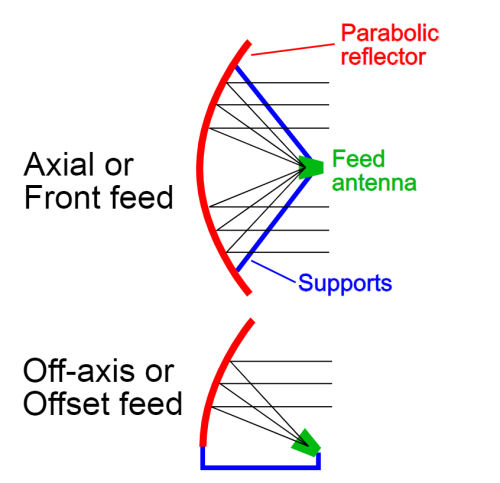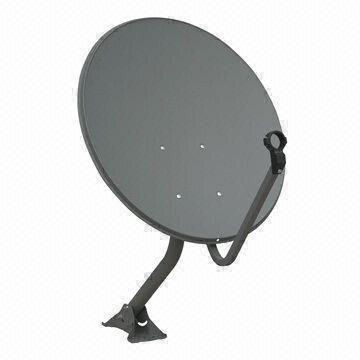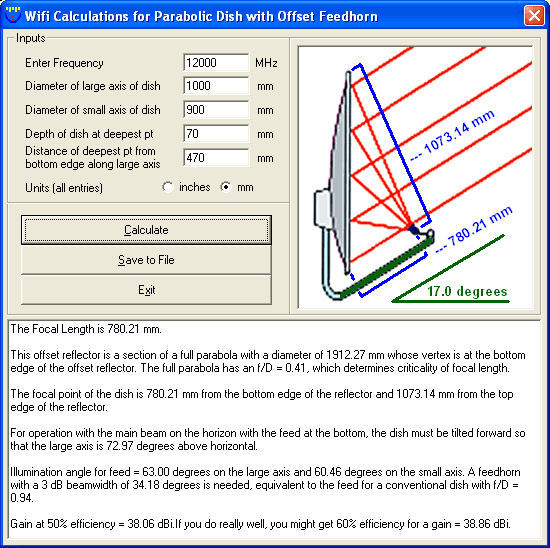Offset Fed Parabolic Dishes
Like a normal axial fed ("prime focus") dish, an offset fed dish uses a parabolic reflector to collect and focus radio waves, but in the case of the offset fed dish the feed is set to one side of the dish to it it outside the main beam as shown below:

As you can see, in the case of the offset fed dish the beam is not obstructed by either the feed or the feed support,which leads to a cleaner beam pattern and higher efficiency. In addition, the feed points towards the sky (at least at lower elevation angles), so any "spillover" sees the cold sky rather than the ground, leasing to a lower antenna temperature.
While the shape of the usual axial fed dish is round and shaped as a uniform parabola of revolution, the shape of an offset dish is more complex. It's still a segment of a parabola of revolution, but it's an off axis segment and the shape is elliptical when viewed straight on.

A typical small offset fed dish
Dish size and specification
While an axial fed parabolic antenna is defined by it's diameter and focal length, an offset fed dish is defined by the major and minor axes of the ellipse and the focal length. The ratio of the major and minor axes are governed by what is called the "offset angle". When the dish is vertical and the feed is from below, the bean will be tilted up by the offset angle. This is typically in the region of 26 degrees for dishes intended for use with Ku band TV. So to aim the been up at 45 degrees, it has to be tilted back by 19 degrees (45-26=19). A 1m dish for example would have a major axis height of 100cm and a minor axis around 90cm. In some cases manufacturers use the major axis length to define the dish, but in a few cases they may use the minor axis. So it's possible a dish describes as a 1m dish could be 110cm in height by 100cm in width. You have to check. Usually it's the major axis which is given because it's a bigger number and bigger is better when it comes to sales! Sometimes the size includes the edge (which may be rolled over over for higher strength), sometimes it may be the actual size of the parabolic reflector surface. If buying a dish online I would strongly suggest you make sure you know exactly how the vendor is defining dish size, or your dish may turn out to be smaller that than you thought it was!
There's a very useful calculator at https://mscir.tripod.com/parabola/. Under the "WiFi" menu there's a calculator for offset fed dishes which gives you the focal length and offset and focal length and f/d ratio based on the height, width, depth and position of deepest point.

Essential Reading
Paul Wade, W1GHZ, has a section on offset fed dishes in his excellent on-line Antenna Handbook
.jpg)